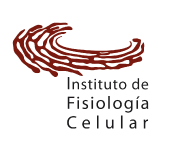Cryopreservation of gametes and embryos and their molecular changes
Estudillo, E., Jiménez, A., Bustamante-Nieves, P. E., Palacios-Reyes, C., Velasco, I., & López-Ornelas, A. (2021). Cryopreservation of Gametes and Embryos and Their Molecular Changes. International Journal of Molecular Sciences, 22(19), 10864. doi:10.3390/ijms221910864
The process of freezing cells or tissues and depositing them in liquid nitrogen at -196 °C is called cryopreservation. Sub-zero temperature is not a physiological condition for cells and water ice crystals represent the main problem since they induce cell death, principally in large cells like oocytes, which have a meiotic spindle that degenerates during this process. Significantly, cryopreservation represents an option for fertility preservation in patients who develop gonadal failure for any condition and those who want to freeze their germ cells for later use. The possibility of freezing sperm, oocytes, and embryos has been available for a long time, and in 1983 the first birth with thawed oocytes was achieved. From the mid-2000s forward, the use of egg vitrification through intracytoplasmic sperm injection has improved pregnancy rates. Births using assisted reproductive technologies (ART) have some adverse conditions and events. These risks could be associated with ART procedures or related to infertility. Cryopreservation generates changes in the epigenome of gametes and embryos, given that ART occurs when the epigenome is most vulnerable. Furthermore, cryoprotective agents induce alterations in the integrity of germ cells and embryos. Notably, cryopreservation extensively affects cell viability, generates proteomic profile changes, compromises crucial cellular functions, and alters sperm motility. This technique has been widely employed since the 1980s and there is a lack of knowledge about molecular changes. The emerging view is that molecular changes are associated with cryopreservation, affecting metabolism, cytoarchitecture, calcium homeostasis, epigenetic state, and cell survival, which compromise the fertilization in ART.




